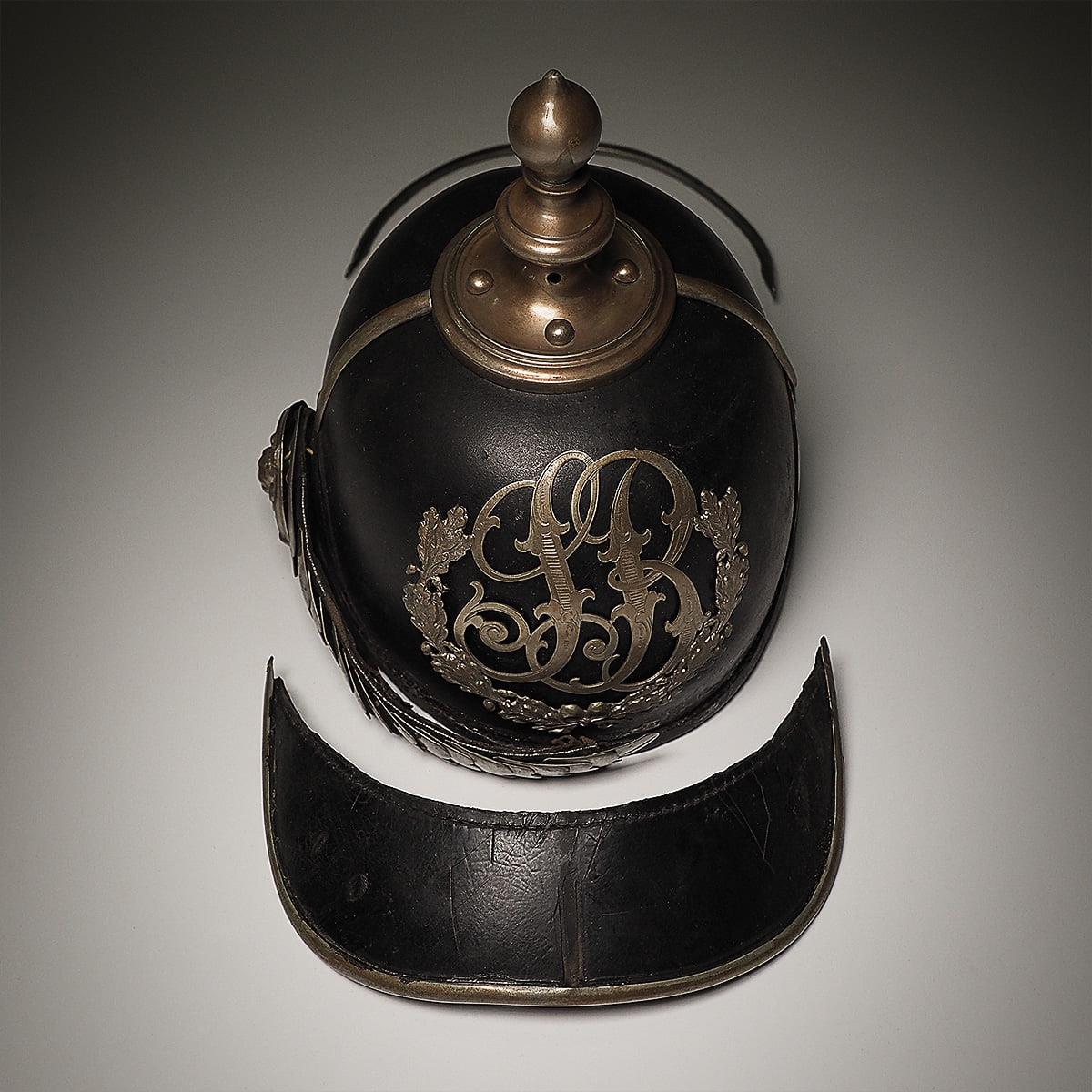LEATHER HELMET OF THE MOST MUNICIPAL POLICE
› Detail › LEATHER HELMET OF THE MOST MUNICIPAL POLICEExhibit of the Month 11 / 2020
Museum collections are not always in perfect condition due to the passage of time, which is why they receive the deserved care from our or external conservators and restorers. One of the interesting collection items that is currently preparing for such care from a restorer has been chosen as the exhibit of the month of November. It is a leather helmet for a guard of the Most municipal police.
The helmet of the Most municipal police is made of hardened and black lacquered leather and is equipped with alpaca fittings (an alloy of copper, nickel, and zinc). The bell of the helmet consists of two parts and is fitted with a front and rear leather shield. The helmet has a chin strap with scales shaped like laurel leaves (only one is preserved) and is attached to the helmet with a disc featuring a relief lion's head. On the front side of the helmet, there is a badge in the form of intertwined letters SB (Stadt Brüx – the city of Most) placed in an oak wreath. At the top of the bell, there is a droplet-shaped spike.
These helmets were introduced into the equipment of the Most municipal police at the end of the 19th century, possibly in the 1890s. They were modeled after the helmets of the guards of the Vienna city police, introduced after 1880. Subsequently, all major cities in the Cisleithanian part of the Habsburg monarchy (Prague, Brno, etc.) imitated them. The helmets remained part of the city police's equipment probably until 1918. In addition to these helmets, a black cap of the so-called kepi military type and a black hat adorned with a rooster's crest also served as headgear (hence the term "chocholatí" was used in the urban slang for municipal guards in the Czech context).
The history of the Most municipal police is linked to the year 1849, when its legal definition was established by the issuance of Imperial Patent No. 170/1849 "Provisional Law on Municipalities." This was the first legal regulation of municipal governance, including police rights for municipalities. The municipal police were thus subordinate to city councils and magistrates. The task of the municipal police was to ensure order in the streets of the city, oversee the organization of markets, the functioning of inns, adherence to the night hour, and supervise prostitution. The municipal police also included the function of a night watchman, who monitored the city streets during the night hours. His main task was not only to maintain order but also to act as a preventive patrol in case of nighttime fires. The Most municipal police carried out its activities within the city. In the suburbs and rural surroundings of Most, police oversight with authority was entrusted to the state gendarmerie. After 1870, the municipal police in Most was supplemented by the state police, which, unlike the Most municipal police, also served as a political police.
(text: Jiří Šlajsna, photo: Pavel Krásenský) Show less
 en
en cs
cs de
de